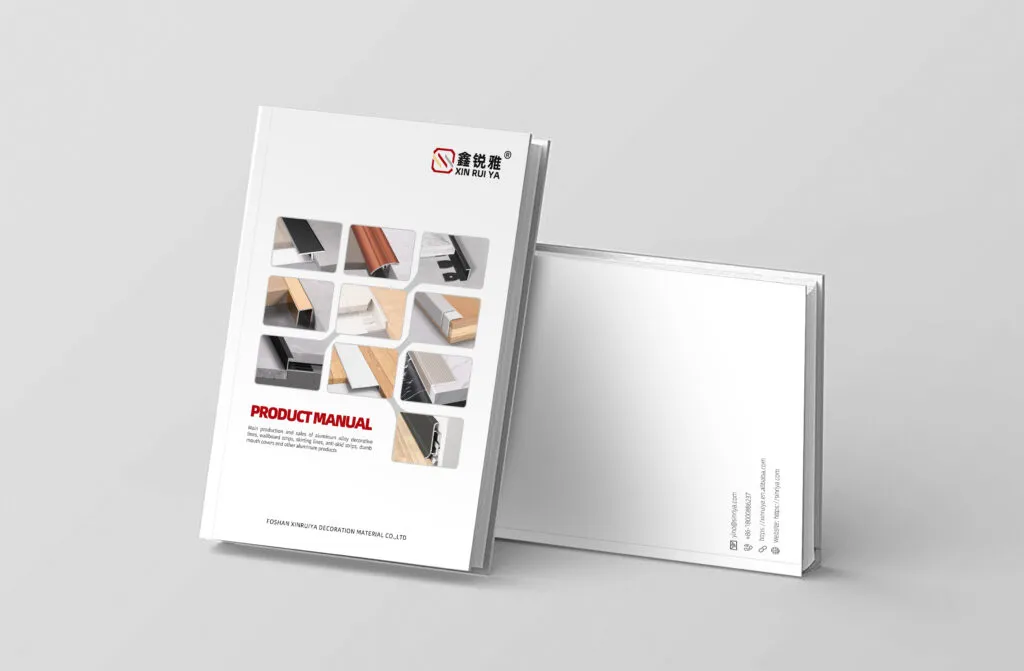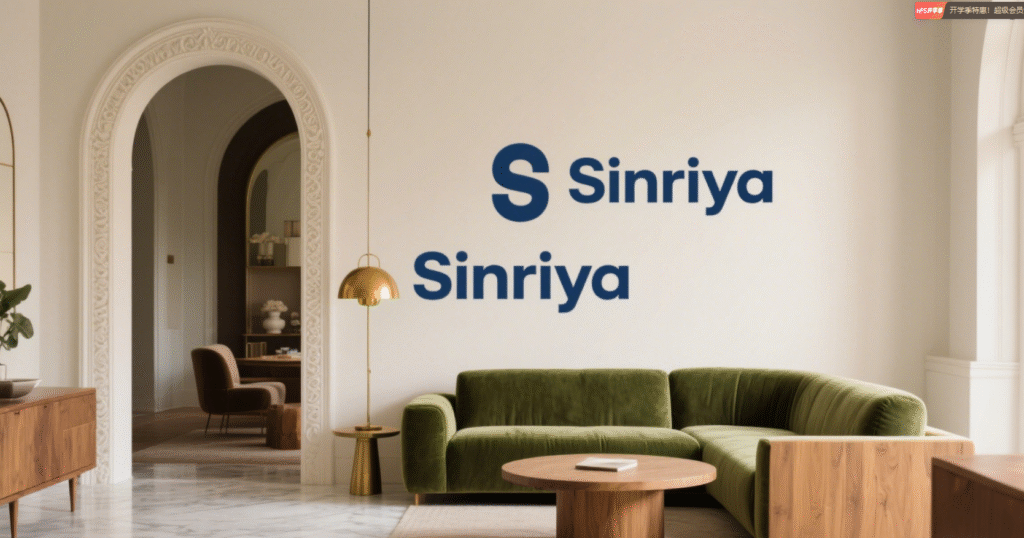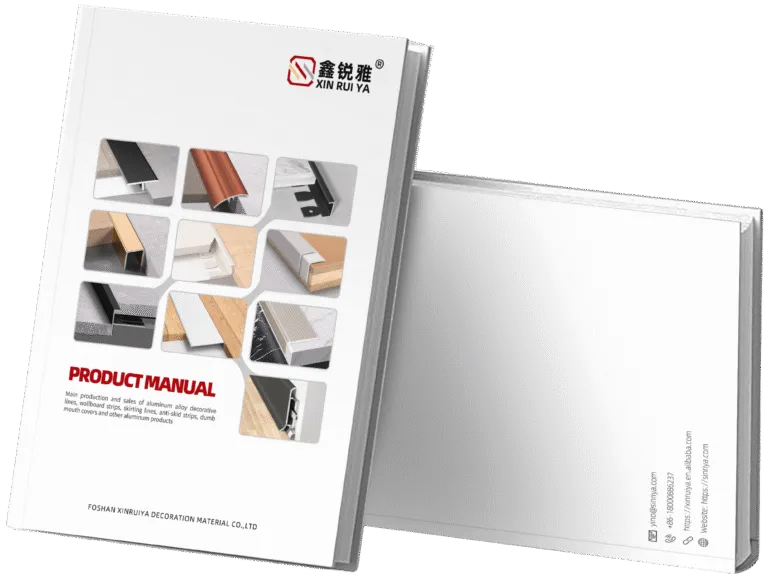
Hello, I’m Leo Liang. Welcome to my own slice of cyberspace. In Sinriya, my passion for home renovation and the versatile nature of aluminum have converged. With years of exposure to the B2B home building materials industry, primarily our company’s own brand Sinriya, I have been privileged to become acquainted with architects, interior designers, and homeowners alike, making their concepts a reality. My journey has taken me through hundreds of projects, from bustling commercial spaces to serene residential homes, and through them all, aluminum decorative trims have proven to be a reliable, convenient, and elegant solution.
This is where I share the information I’ve acquired, not just as a supplier, but as a genuine enthusiast. I believe that it’s the little things that truly count in design. A well-recommended, well-installed aluminum trim is what can transform a room from plain to magnificent. It’s not just a covering strip; it’s a design element that can make a room its own. On Sinriya.com, in my podcast, and on social media sites like X, YouTube, and LinkedIn, I try to make the world of home improvement understandable and provide real, professional guidance. Join me as we explore the nuances of aluminum trims and how they can redefine your next project.
Why Aluminum Is the Designer’s Top Choice for Modern Trim
In the realms of interior design and architecture, material selection is priority number one. Designers have been in search of materials that are not only gorgeous but durable, sustainable, and versatile for decades. Aluminum has been a contender, and particularly in the form of decorative trims. Its natural properties render it a highly adaptable material for virtually any application. Where wood can warp and plastic can crack, aluminum offers a strength with lightness that is hard to compete with. This makes it accessible for easy handling and fitting without sacrificing durability. In my years at Sinriya, I’ve seen the huge trend towards aluminum on both residential and commercial levels. Designers and architects appreciate its crisp lines and sleek appearance. It may be applied to seamlessly integrate into a minimalist look or create a stunning statement piece. The fact that the material may be extruded to intricate profiles provides unlimited design possibilities, from basic L-shaped tile trims to intricate custom-designed decorative profiles. Use of such an accommodating material presents a chance for a certain level of creativity not always available with other materials. Besides, aluminum is also highly resistant to rust and corrosion, so it is a highly appropriate choice for moist areas like bathrooms and kitchens. It demonstrates its longevity and low-maintenance feature by performing in these areas.
What Are the Major Types of Aluminum Used in Decorative Trims?
When we talk about aluminum, we usually refer to aluminum alloys. Regular aluminum is somewhat soft, so it is blended with other metals to enhance its properties. For decorative trims, the most commonly used are the 6000 series alloys, namely 6063 and 6463. The 6063 alloy is also called the “architectural alloy” for a good reason. It has an excellent surface finish, excellent corrosion resistance, and can be extruded easily into complex shapes, so it is well-suited to complex trim work. Based on my working experience in Sinriya, I can guarantee that the majority of our high-in-demand profiles are fabricated by employing this use-friendly alloy. 6463 is another sought-after alloy that has been especially designed for applications involving a shiny, mirror-like appearance, which is widely employed in high-grade decorative trim. Other alloys like the 3000 series, manganese-based major alloying element, have good formability and mediocre strength, while the 5000 series magnesium-alloyed one enjoys excellent corrosion resistance, especially in marine environments. The selection of alloy is then dependent upon the end-use, surface finish required, and engineering specifications for the project.
How Do Different Finishes Affect the Look and Durability of Aluminum Trims?
The finish at the end of an aluminum trim is not just for show; it is crucial to its maintenance and durability. The two most common end finishing treatments applied to aluminum trims are anodizing and powder coating. Anodizing is an electrochemical process which develops the natural oxide layer on the surface of the aluminum. This is not a surface coating; it’s really a part of the metal. It is incredibly abrasion-, corrosion-, and UV-resistant. Anodized finishes have a distinctive metallic luster and are available in a wide range of colors, although the choice is a bit more limited than powder coating. In my experience, anodized trims are often the favorite of architects for their subtle sophistication and longevity over many years, especially where usage is high. Powder coating, however, is a process in which a dry powder is electrostatically deposited and then cured by heat to produce a hard-wearing finish. One of the biggest advantages to powder coating is that it is available in an enormous array of colors, ranging from very bright and bold colors to various textures and gloss levels. Due to this reason, it is a highly sought-after option for use where a specific color scheme is desired. Both finishes are highly protected, but anodizing will be more wear and scratch resistant, while powder coating possesses a greater and generally more decorative coat.
What Are the Common Sizes and Shapes for Aluminum Trims?
Aluminum trims offer a wide variety of shapes and sizes to suit a wide range of applications. Some of the most common profiles are L-shaped trims for corner protection, T-shaped trims for transition between two different types of flooring materials, and U-channel trims for panel and board edges. At Sinriya, we’ve assembled a comprehensive set of profiles based on years of designer and installer input. The dimensions of the trims may even vary hugely between trims. The legs of an L-shaped trim, say, could be a modest 9.5mm (3/8\”) or a considerable 152.4mm (6\”). The thickness of the trim is also worth considering, most often being somewhere between 0.75mm and 1.5mm or more for uses of heavy-duty application. The trims are typically standardized at about 2.5 to 3 meters in length, though they may frequently be available to be trimmed to custom lengths. The profile and size you select will be based on what you’re going to be using them for, like how thick the tiles you’re working with are or the space you’re going to be filling. It is always best to have trim in-house when starting the installation in order to ensure an exact fit.
Where Can You Install Aluminum Trims in Your Home?
The versatility of aluminum trims makes them a versatile product that can be installed in almost any room of the home, either for form or function. In bathrooms and kitchens, aluminum tile trims are used to hide exposed tile edges from chipping and create a clean, finished look. They are also invaluable at creating a watertight seal where walls and floors join. In living rooms and corridors, aluminum trims can be used to create fashionable transitions between flooring surfaces, for example, tile to carpet or wood. They can even be used as a design element on walls that can create feature panels or accent lines. I’ve seen some terrific uses for our Sinriya trims varying from being utilized to create framing around mirrors and art to creating custom shelving and furniture details. The opportunities are limitless and offer a great means to introduce a touch of modern chic to any setting. The water and strength resistance of aluminum also make it suitable for some exterior use, like in exterior cladding systems or on balconies.
How Do You Get a Perfect Installation?
A professional job is in the details, and installing aluminum trim is not an exception. Step one and most crucial is accurate measuring and cutting. Trimming with a fine-toothed miter blade used on non-ferrous metal will give sharp, precise cuts, especially on corner joints. The surface to which the trim will be fitted should be free, dry, and dust-free for good adhesion. Trim is usually fitted simultaneously with the tiles, the anchoring leg of the trim being fixed into the tile adhesive. Carefully pushing the trim into the adhesive will give a strong bond. A spirit level is essential to check that the trim is level. When a smooth appearance is required, especially where the tiles meet, pre-fabricated corner pieces can be a huge time-saver and ensure an acceptable finish. After the trim and tiles are in their correct positions, the grout is applied, which fills any gaps between the trim and the tiles. Sweep off any excess grout immediately with a damp sponge so it will not harden on the finished surface. To learn more about how to prevent common errors, I recommend reading this article on the 5 most common mistakes in metal trim installation.
What Are the Emerging Trends in Aluminum Trim Design?
The world of architectural design is constantly evolving, and aluminum trims are no exception. One of the most exciting trends that we are seeing at Sinriya is towards more sophisticated and bespoke profiles. The designers and architects are no longer limited to generic forms; they are now actually requesting bespoke designs in harmony with the project’s geometry. Another significant trend is the growing demand for sustainable and eco-friendly materials. Aluminium is highly recyclable, and this has become a major selling point for green-aware clients. Perforated and textured metal panels are also gaining traction, adding depth and visual appeal to facades and interior partitions. In color, while traditional metallic finishes remain in favor, there is growing demand for a greater range of colors and textures facilitated by advances in powder coating technology. We’re also seeing technology integration, such as LED lighting, into trim profiles, with stunning visual impact. This union of design, technology, and sustainability is changing what can be accomplished with aluminum trims.
How Does Aluminum Trim Make a Home Sustainable and Healthy?
In our current era, building with sustainability and health being the priority is more important than ever. Aluminum is a great choice as far as this is concerned. First, it is one of the most recycled and recyclable material on the planet. Recycling aluminum takes merely a fraction of the energy required to produce new aluminum, greatly reducing its impact on the planet. This dedication to sustainability is one that permeates deeply within Sinriya, and we actively promote the use of recyclable aluminum in our products. Beyond recyclability, aluminum is also a very low-maintenance metal. It will not require painting or staining, which eliminates volatile organic compounds (VOCs) emissions that are typically present in these finishes. This is part of a better indoor air quality, which is a dominant aspect of a healthy home. Furthermore, aluminum’s non-porous finish resists mold and mildew growth and is ideal for the development of hygienic environments, especially in kitchen and bathroom areas. Its durability also makes it durable, reducing the need to replace and create waste. By choosing aluminum trims, you are not just picking a trendy style; you are also making a green choice for your household and the planet.
References:
- https://alusite.com/blogs/news/how-is-aluminum-trim-made-and-what-are-some-common-types
- https://www.amarkgroup.com.au/anodised-or-powder-coated-choose-your-aluminium-finish/
- https://www.metalcon.com/metal-architecture-design-trends/
Focus Keywords:
- Aluminum Decorative Trims
- Sinriya Home Renovation
- B2B Building Materials
- Aluminum Trim Profiles
- Interior Design Trends






